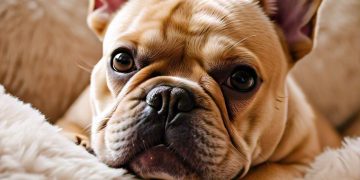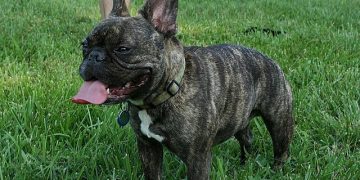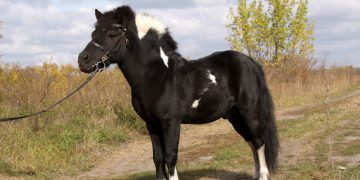Just like humans, dogs, and cats, routine dental care is essential to maintaining a horse’s health. Most veterinarians will recommend a dental exam once to twice yearly, depending on the age and lifestyle of the horse. Unlike dogs and cats, horse teeth continue to erupt (or grow) throughout their lifetime, which can create dental issues that need to be addressed quickly. A dental exam with your primary vet will consist of a visual exam as well as “floating” or filing of the teeth where necessary to remove any sharp points or abnormalities.
Routine dental care is important for a variety of reasons:
- With domestication and confinement, we have modified a horse’s diet and eating patterns which can cause dental issues
- Performance horses are started at a younger age and asked for a higher performance than ever before
- Breeding horses are not selected based on their dental attributes
Advantages of routine dental care include:
- Helps to keep the horse’s mouth comfortable
- Allows your horse to utilize their feed more efficiently
- Allows your horse to perform better in a bit/bridle
- Promotes a healthier horse that may live longer
How Many Teeth Do Horses Have?
Just like humans, horses have two sets of teeth during their lifetime. The first set are called deciduous teeth, or baby teeth, and the second set are permanent, or adult teeth.
Horses have two different types of teeth. The front, or forward, teeth are called incisors and function to cut off forage (grass or hay). The second type of teeth are cheek teeth, which include premolars and molars that chew food before swallowing. These teeth are wide, flat, and have a grooved surface to allow for grinding.
An adult male horse will have 40 permanent teeth, while an adult female (mare) may have 36-40 adult teeth. This variation of adult mare teeth is due to mares being less likely to have the canine (bridle) teeth.
Deciduous (Baby) Teeth
| Tooth Name | Eruption timeline |
| 1st incisors (central) | Birth or 1st week |
| 2nd incisors (intermediates) | 4-6 weeks |
| 3rd incisors (corners) | 6-9 months |
| 1st, 2nd, and 3rd premolars (cheek teeth) | Birth or first 2 weeks for all premolars |
Permanent (Adult) Teeth
| Tooth Name | Eruption Timeline |
| 1st incisors (centrals) | 2 ½ years |
| 2nd incisors (intermediate) | 3 ½ years |
| 3rd incisors (corners) | 4 ½ years |
| Canines (bridle) | 4-5 years |
| Wolf teeth (1st premolars) | 5-6 months |
| 2nd premolars (1st cheek teeth) | 2 ½ years |
| 3rd premolars (2nd cheek teeth) | 3 years |
| 4th premolars (3rd cheek teeth) | 4 years |
| 1st molars (4th cheek teeth) | 9-12 months |
| 2nd molars (5th cheek teeth) | 2 years |
| 3rd molars (6th cheek teeth) | 3 ½-4 years |
How Often Should a Horse’s Teeth Be Examined?
Every horse should have a dental exam performed as part of their routine annual care with their veterinarian. At the time of the exam, the horse will be sedated, and a full mouth speculum will be used to open the horse’s mouth. The veterinarian will examine the tooth surfaces as well as the gums, cheek, tongue, hard palate, and soft palate for any abnormalities. From the exam, the veterinarian can decide if any further dental care needs to be performed, such as a dental float. A dental float files down the teeth with a manual or power-operated file. Horses chew in a circular motion. The upper jaw is also wider than the lower jaw, so horses commonly develop sharp points on the outside of their upper molars and inside of their lower molars. These are the areas that commonly need to be floated.
How often a horse needs a dental float will depend on the following factors:
- Age: Younger and older horses are more likely to need more dental care
- Lifestyle: Performance horses living in a stall and eating grain generally require more dental care versus a horse living outside in pasture eating forage
- Genetics: Just like people, some horses will have better mouths than others due to their genes
A young horse in training may need to have a dental exam performed as often as every 6 months, while a middle-aged horse that is living outside on pasture may just need a yearly exam.
Horse Teeth and Age
How Can You Tell a Horse’s Age By Their Teeth?
A horse’s age can be estimated based on inspection of their teeth. When inspecting a horse’s teeth to determine their age, there are four features that are examined:
- Eruption of permanent teeth
- Disappearance of cups: Cups are deep indentures in the center of the surface of new permanent teeth. These disappear at intervals (6, 7, 8, 9, 10 and 11 years of age) as horses age. By 11 years of age, a horse should no longer have cups and begin to develop dental stars on the surface of the teeth.
- Angle of incidence: This is the angle that forms by the meeting of the upper and lower incisor teeth. In young horses, the angle is 160-180 degrees. As a horse ages, the angle will slant forward and outward becoming less than a right angle.
- Shape of the surface of the teeth: The shape of the surface of the teeth undergoes a lot of changes as a horse ages. In a young horse, the surface of the teeth will be broad and flat. As a horse ages, the surface will become oval (at about 8-12 years of age), and then triangular at about age 15.
It is important to remember that these features can vary with every horse, and this is only a way to estimate a horse’s age.
Recommended Dental Schedule for Horses
When deciding how often a horse should have a dental exam performed, it is always important to discuss a schedule with your veterinarian. A horse’s dental health can vary dramatically based on their age, lifestyle, and genetics.
In general, a young horse’s teeth change more dramatically up until age 5 when they lose their baby teeth and gain permanent teeth. Because of these changes, it is always a good idea to have a dental exam performed at least 1-2 times per year. A young horse’s teeth are also softer than an older horse’s, and that allows them to develop sharp points more quickly.
Middle-aged horses with good mouths may only need a dental exam performed once per year.
As horses become seniors, they are more likely to have dental issues and should have 1-2 dental exams performed yearly. Because horse teeth continue to erupt throughout their entire life, senior horses can wear their teeth out and eventually completely loose them. It is important to check for any dental abnormalities that could cause issues with being able to properly chew and digest food.
Common Dental Problems in Horses
Signs your horse may have a dental issue:
- Dropping feed
- Tossing, tilting, or shaking head
- Nasal discharge
- Foul smelling breath
- Weight loss
- Facial swelling
- Large or undigested feed particles in manure
- Poor performance
Common dental problems in horses include:
- Sharp points on cheek teeth causing laceration or ulcers of cheek or tongue
- Retained caps (baby teeth)
- Discomfort from wolf teeth and bit contact
- Hooks on the upper or lower cheek teeth from misalignment
- Long or sharp bridle (canine) teeth interfering with insertion or removal of bit
- Lost or broken teeth
- Abnormal or uneven bite planes (malocclusion)
- Excessively worn teeth (especially seen in older horses)
- Infected teeth or gums
- Misalignment (could be congenital defect)
- Periodontal (gum) disease
Dental health is extremely important to the overall health of a horse. If a horse has poor dental health, it could lead to other conditions such as:
- Colic
- Choke
- Weight loss or poor body condition
- Poor performance
- Anorexia (loss of appetite)
- Diarrhea
- Tooth root abscess/ infection
- Nasal/sinus issues

























